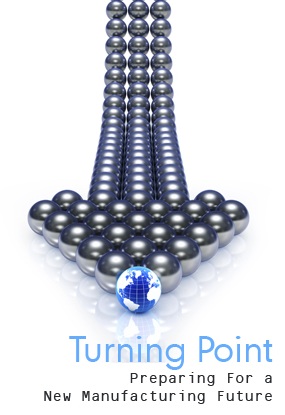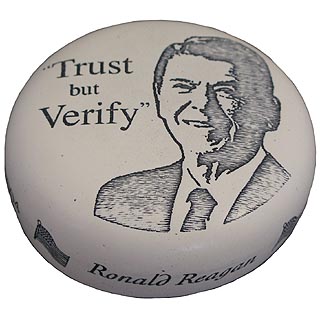Archive for the ‘Innovation’ Category
Keynote Presentation – DFMA for Discontinuous Improvement and Innovation
 Tuesday, June 15th, 2010
Tuesday, June 15th, 2010
9:30 a.m. to 10:30 a.m.
Keynote Presentation
2010 INTERNATIONAL FORUM on Design for Manufacturing and Assembly
Providence, Rhode Island, USA
DFMA for Discontinuous Improvement and Innovation
Abstract
The literature is full of examples of companies using DFMA to design lower cost products. Though the savings are radical in magnitude, there is a general misconception that DFMA is most like continuous improvement work with regular installments of small improvements. This thinking does DFMA an injustice, as the DFMA process drives creative solutions, radical changes, discontinuous improvement, and innovation. The paper describes how to use DFMA to define areas for discontinuous improvement and innovation, how to create a design approach, and how to define and execute a project plan to achieve radical improvement.
Presenter
Dr. Mike Shipulski
For the past six years as Director of Engineering at Hypertherm, Inc., Mike has had the responsibilities of product development, technology development, sustaining engineering, engineering talent development, engineering labs, and intellectual property. Before Hypertherm, Mike worked in a manufacturing start‐up as the Director of Manufacturing and at General Electric’s R&D center as a Manufacturing Scientist during the start‐up phase of GE’s Six Sigma efforts. Mike received a Ph.D. in Manufacturing Engineering from Worcester Polytechnic Institute. Mike is the winner of the 2006 DFMA Supporter of the Year, and has been a keynote presenter at the DFMA Forum since 2006.
With Innovation, It’s Trust But Verify.
 Your best engineer walks into your office and says, “I have this idea for a new technology that could revolutionize our industry and create new markets, markets three times the size of our existing ones.” What do you do? What if, instead, it’s a lower caliber engineer that walks into your office and says those same words? Would you do anything differently? I argue you would, even though you had not heard the details in either instance. I think you’d take your best engineer at her word and let her run with it. And, I think you’d put less stock in your lesser engineer, and throw some roadblocks in the way, even though he used the same words. Why? Trust.
Your best engineer walks into your office and says, “I have this idea for a new technology that could revolutionize our industry and create new markets, markets three times the size of our existing ones.” What do you do? What if, instead, it’s a lower caliber engineer that walks into your office and says those same words? Would you do anything differently? I argue you would, even though you had not heard the details in either instance. I think you’d take your best engineer at her word and let her run with it. And, I think you’d put less stock in your lesser engineer, and throw some roadblocks in the way, even though he used the same words. Why? Trust.
Innovation is largely a trust-based sport. We roll the dice on folks that have already put it on the table, and, conversely, we raise the bar on those that have not yet delivered – they have not yet earned our trust. Seems rational and reasonable – trust those who have earned it. But how did they earn your trust the first time, before they delivered? Trust.
There is no place for trust in the sport of innovation. It’s unhealthy. Ronald Reagan had it right:
Trust, but verify.
As we know, he really meant there was no place for trust in his kind of sport. Every action, every statement had to be verified. The consequences so cataclysmic, no risk could be tolerated. With innovation consequences are not as severe, but they are still substantial. A three year, multi-million (billion?) dollar innovation project that returns nothing is substantial. Why do we tolerate the risk that comes with our trust-based approach? I think it’s because we don’t think there’s a better way. But there is. What we need is some good, old-fashioned verification mixed in with our innovation.
When the engineer comes into your office and says she can reinvent your industry, what do you ask yourself? What do you want to verify? You want to know if the new idea is worth a damn, if it will work, if there are fundamental constraints in the way. But, unfortunately for you, verification requires knowledge of the physics, and you’re no physicist. However, don’t lose hope. There are two simple tactics, non-technical tactics, to help with this verification business.
First – ask the engineers a simple question, “What conflict is eliminated with the new technology?” Good, innovative technologies eliminate fundamental, long standing conflicts. These long standing conflicts limit a technology in a way that is so fundamental engineers don’t even know they exist. When a fundamental conflict is eliminated, long held “design tradeoffs” no longer apply, and optimizing is replaced by maximizing. With optimizing, one aspect of the design is improved at the expense of another. With maximizing, both aspects of the design are improved without compromise. If the engineers cannot tell you about the conflict they’ve eliminated, your trust has not been sufficiently verified. Ask them to come back when they can answer your question.
Second – when they come back with their answer, it will be too complex to be understood, even by them. Tell them to come back when they can describe the conflict on a single page using a simple block diagram, where the blocks, labeled with everyday nouns, represent parts of the design intimately involved with the conflict, and the lines, labeled with everyday verbs, represent actions intimately involved with the conflict. If they can create a block diagram of the conflict, and it makes sense to you, your trust has been sufficiently verified. (For a post with a more detailed description of the block diagrams, click on “one page thinking” in the Category list.)
Though your engineers won’t like it at first, your two-pronged verification tactics will help them raise their game, which, in turn, will improve the risk/reward ratio of your innovation work.
Tools for innovation and breaking intellectual inertia
 Everyone wants growth – but how? We know innovation is a key to growth, but how do we do it? Be creative, break the rules, think out of the box, think real hard, innovate. Those words don’t help me. What do I do differently after hearing them?
Everyone wants growth – but how? We know innovation is a key to growth, but how do we do it? Be creative, break the rules, think out of the box, think real hard, innovate. Those words don’t help me. What do I do differently after hearing them?
I am a process person, processes help me. Why not use a process to improve innovation? Try this: set up a meeting with your best innovators and use “process” and “innovation” in the same sentence. They’ll laugh you off as someone that doesn’t know the front of a cat from the back. Take your time to regroup after their snide comments and go back to your innovators. This time tell them how manufacturing has greatly improved productivity and quality using formalized processes. List them – lean, Six Sigma, DFSS, and DFMA. I’m sure they’ll recognize some of the letters. Now tell them you think a formalized process can improve innovation productivity and quality. After the vapor lock and brain cramp subsides, tell them there is a proven process for improved innovation.
A process for innovation? Is this guy for real? Innovation cannot be taught or represented by a process. Innovation requires individuality of thinking. It’s a given right of innovators to approach it as they wish, kind of like freedom of speech where any encroachment on freedom is a slippery slope to censorship and stifled thinking. A process restricts, it standardizes, it squeezes out creativity and reduces individual self worth. People are either born with the capability to innovate, or they are not. While I agree that some are better than others at creating new ideas, innovation does not have to be governed by hunch, experience and trial and error. Innovation does not have to be like buying lottery tickets. I have personal experience using a good process to help stack the odds in my favor and help me do better innovation. One important function of the innovation process is to break intellectual inertia.
Intellectual inertia must be overcome if real, meaningful innovation is to come about. When intellectual inertia reigns, yesterday’s thinking carries the day. Yesterday’s thinking has the momentum of a steam train puffing and bellowing down the tracks. This old train of thought can only follow a single path – the worn tracks of yesteryear, and few things are powerful enough to derail it. To misquote Einstein:
The thinking that got us into this mess is not the thinking that gets us out of it.
The notion of intellectual inertia is the opposite of Einstein’s thinking. The intellectual inertia mantra: the thinking that worked before is the thinking that will work again. But how to break the inertia? Read the rest of this entry »
Reducing the risk of Innovation
 Though we can’t describe it in words, or tell someone how to do it, we all know innovation is good. Why is it good? Look at the causal chain of actions that create a good economy, and you’ll find innovation is the first link.
Though we can’t describe it in words, or tell someone how to do it, we all know innovation is good. Why is it good? Look at the causal chain of actions that create a good economy, and you’ll find innovation is the first link.
When innovation happens, a new product is created that does something that no other product has done before. It provides a new function, it has a new attribute that is pleasing to the eye, it makes a customer more money, or it simply makes a customer happy. It does not matter which itch it scratches, the important part is the customer finds it valuable, and is willing to pay hard currency for it. Innovation does something amazing, it results in a product that creates value; it creates something that’s worth more than the sum of its parts. Starting with things dug from the ground or picked from it – dirt (steel, aluminum, titanium), rocks (minerals/cement/ceramics), and sticks (wood, cotton, wool), and adding new thinking, a product is created, a product that customers pay money for, money that is greater than the cost of the dirt, rocks, sticks, and new thinking. This, my friends, is value creation, and this is what makes national economies grow sustainably. Here’s how it goes.
Customers value the new product highly, so much so that they buy boatloads of them. The company makes money, so much so stock price quadruples. With its newly-stuffed war chest, the company invests with confidence, doing more innovation, selling more products, and making more money. An important magazine writes about the company’s success, which causes more companies to innovate, sell, and invest. Before you know it, the economy is flooded with money, and we’re off to the races in a sustainable way – a way based on creating value. I know this sounds too simplistic. We’ve listened too long to the economists and their theories – spur demand, markets are efficient, and the world economy thing. This crap is worse than it sounds. Things don’t have to be so complicated. I wish economists weren’t so able to confuse themselves. Innovate, sell, and invest, that’s the ticket for me.
Innovation – straightforward, no, easy, no. Innovation is scary as hell because it’s risky as hell. The risk? A company tries to develop a highly innovative product, nothing comes out the innovation tailpipe, and the company has nothing for its investment. (I can never keep the finance stuff straight. Does zero return on a huge investment increase or decrease stock price?) It’s the tricky risk thing that gets in the way of innovation. If innovation was risk free, we’d all be doing it like voting in Chicago – early and often. But it’s not. Although there is a way to shift the risk/reward ratio in our favor.
After doing innovation wrong, learning, and doing it less wrong, I have found one thing that significantly and universally reduces the risk/reward ratio. What is it?
Know you’re working on the right problem.
Work on the right problem? Are you kidding? This is the magic advice? This is the best you’ve got? Yes.
If you think it’s easy to know you’re working on the right problem, you’ve never truly known you were working on the right problem, because this type of knowing is big medicine. Innovation is all about solving a special type of problem, problems caused by fundamental conflicts and contradictions, things that others don’t know exist, don’t know how to describe, or define, let alone know how to eliminate. I’m talking about conflicts and contradictions in the physics sense – where something must be hot and cold at the same time, something must be big while being small, black while white, hard one instant, and soft the next. Solve one of those babies, and you’ve innovated yourself a blockbuster product.
In order to know you’re working on the right problem (conflict or contradiction), the product is analyzed in the physics sense. What’s happening, why, where, when, how? It’s the rule (not the exception) that no one knows what’s really going on, they only think they do. Since the physics are unknown, a hypothesis of the physics behind the conflict/contradiction must be conjured and tested. The hypothesis must be tests analytically or in the lab. All this is done to define the problem, not solve it. To conjure correctly, a radical and seemingly inefficient activity must be undertaken. Engineers must sit at their desk and think about physics. This type of thinking is difficult enough on its own and almost impossible when project managers are screaming at them to get off their butts and fix the problem. As we know, thinking is not considered progress, only activity is.
After conjuring the hypothesis, it’s tested to prove or disprove. If dis-proven, back to the desk for more thinking. If proven, the conflict/contradiction behind the problem is defined, and you know you’re working on the right problem. You have not solved it, you’ve only convinced yourself you’re working on the right one. Now the problem can be solved.
Believe it or not, solving is the easy part. It’s easy because the physics of the problem are now known and have been verified in the lab. We engineers can solve physics problems once they’re defined because we know the rules. If we don’t know the physics rules off the top of our heads, our friends do. And for those tricky times, we can go to the internet and ask Google.
I know all this sounds strange. That’s okay, it is. But it’s also true. Give your engineers the tools, time and training to identify the problems, conflicts, and contradictions and innovation will follow. Remember the engineering paradox, sometimes slower is faster. And what about those tools for innovation? I’ll save them for another time.
Innovation, Technical Risk, and Schedule Risk
There is a healthy tension between level of improvement, or level of innovation, and time to market. Marketing wants radical improvement, infinitely short project schedules, and no change to the product. Engineers want to sign up for the minimum level of improvement, project schedules sufficiently long to study everything to death, and want to change everything about the new product. It’s healthy because there is balance – both are pulling equally hard in opposite directions and things end up somewhere in the middle. It’s not a stress-free environment, but it’s not too bad. But, sometimes the tension is unhealthy.
There are two flavors of unhealthy tension. First is when engineering has too much pull; they (we) sandbag on product performance and project timelines and change the design willy-nilly simply because they can (and it’s fun). The results are long project timelines, highly innovative designs that don’t work well, a lack of product robustness, and a boatload of new parts and assemblies. (Product complexity.) Second is when Marketing has too much pull; they ask for radical improvement in product functionality with project timelines too short for the level of innovation, and tightly constrain product changes such that solutions are not within the constraints. The results are long project timelines and un-innovative designs that don’t meet product specifications. (The solutions are outside the constraints.) Both sides are at fault in both scenarios. There are no clean hands.
What are the fundamentals behind all this gamesmanship? For engineering it’s technical risk; for marketing it’s schedule risk. Engineering minimizes what it signs up for in order to reduce technical risk and petitions for long project timelines to reduce it. Marketing minimizes product changes (constraints) to reduce schedule risk and petitions for short project timelines to reduce it. (Product development teams work harder with short schedules.) Something’s got to change. Read the rest of this entry »
Problems are good
Everyone laughs at the person who says “We don’t have problems, we have opportunities.” Why do we say that? We know that’s crap. We have problems; problems are real; and it’s okay to call them by name. In fact, it’s healthy. Problems are good. Problems focus our thinking. There is a serious and important nature to the word problem, and it sets the right tone. Everyone knows if the situation has risen to the level of a problem it’s important and action must be taken. People feel good about organizing themselves around a problem – problems help rally the troops.
In a previous post on innovation, I talked about the tight linkage between problems and innovation. In the pre-innovation state there is a problem; in the post-innovation state there is no problem. The work in the middle is a good description of the thing we call innovation. It could also be called problem solving.
Behind every successful product launch is a collection of solved problems. The engineering team defines the problems, understands the physics, changed the design, and makes problems go away. Behind every unsuccessful product launch is at least one unsolved problem. These unsolved problems disrupt product launches – limiting product function, delaying launches, and cancelling others altogether. All this can be caused by a single unsolved problem. Read the rest of this entry »
Innovation, problems, and stomach aches
In the last post on innovation I said I’d provide data on number of hits for a post with innovation in the title. Well, apparently the word recession is more relevant than the word innovation as there were 50% more hits with recession. Next time I should use both recession and innovation in the title and see what happens.
In the last post on innovation I left off with the notion of an operational definition as a way to assign meaning to the word innovation. I ended with a question — can you put your hand over your mouth and point to innovation? In other words, what can we observe to bring innovation into the range of our experience? Starting with the state of things before innovation – what does it look like? And what about the state of things after innovation – what does that look like? And what does it look like to transition between the states?
Starting simply, the state before innovation is defined by a symptom statement, an ill-defined, un-actionable statement of something undesirable. It has not yet risen to the level of an actionable problem statement, but clearly there is a realization of an undesirable situation. Here are several examples of symptom statements. Read the rest of this entry »
Innovation – words and actions
I sat down to write my weekly post with the hope of coming up with something meaningful on innovation. Nothing came. I asked the all-powerful oracle named Google for some guidance, and my thinking diverged. I realized that there are too many definitions for the word innovation, too many contexts, too many facets. There is too much written about the word and too little written about the actions. I, too, am guilty of using the word for its multiple meanings and sex appeal. I put it in the title of this post to get some attention (I’ll let you know if Google Analytics reports more hits). Heck, I even use the word in the description of the blog.
When I started writing my dissertation, Chris Brown, my advisor, handed me a book and said something like, “You should learn how to write, so read this”. The book was Language In Thought and Action, by S.I. Hayakawa. I read it, finished my dissertation, and, most importantly, learned about words. Since my struggle with innovation was all about the word, I dusted off Hayakawa and asked him to help. Here is what the senator had to say.
To map meaning to a word it is best to point to the physical world (extensional meaning). Putting your hand over your mouth and pointing to a chair is a good way to assign meaning to the word chair. Closing your eyes and talking about a chair (intensional meaning) is not as good. So, to understand innovation it would be best to point your finger at it. But how?
Using an operational definition is a good way to point to the physical world. He quotes physicist P.W. Bridgeman who coined the term.
To find the length of an object, we have to perform certain physical operations. The concept of length is therefore fixed when the operations by which length is measured is fixed….. In general, we mean by any concept nothing more than a set of operations; the concept is synonymous with the corresponding set of operations.”
Hayakawa would ask, “Can you put your hand over your mouth and point to innovation?” Bridgeman would ask, “Can you define the set of operations for innovation? ”
This week my answer is “Not yet”.
 Mike Shipulski
Mike Shipulski